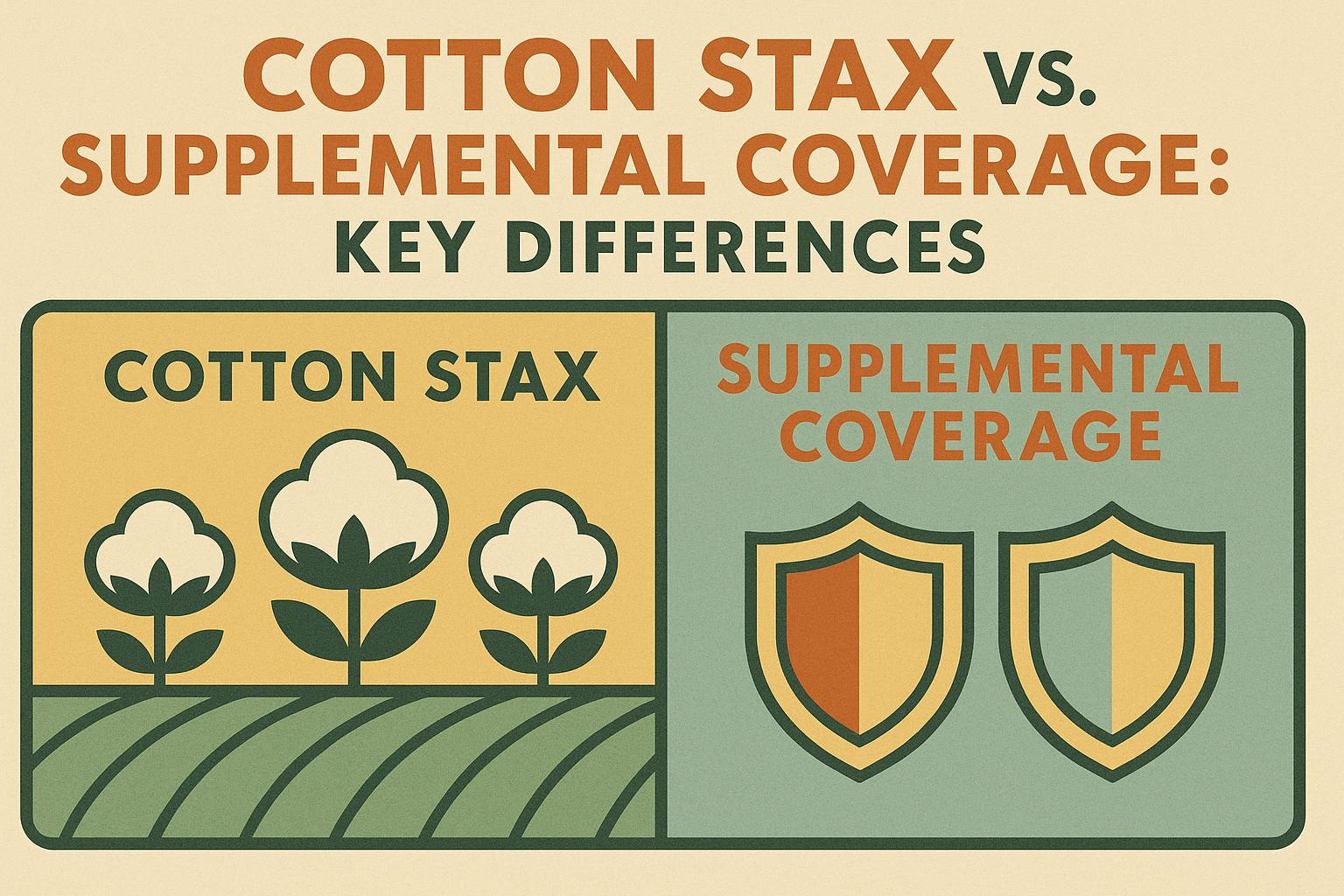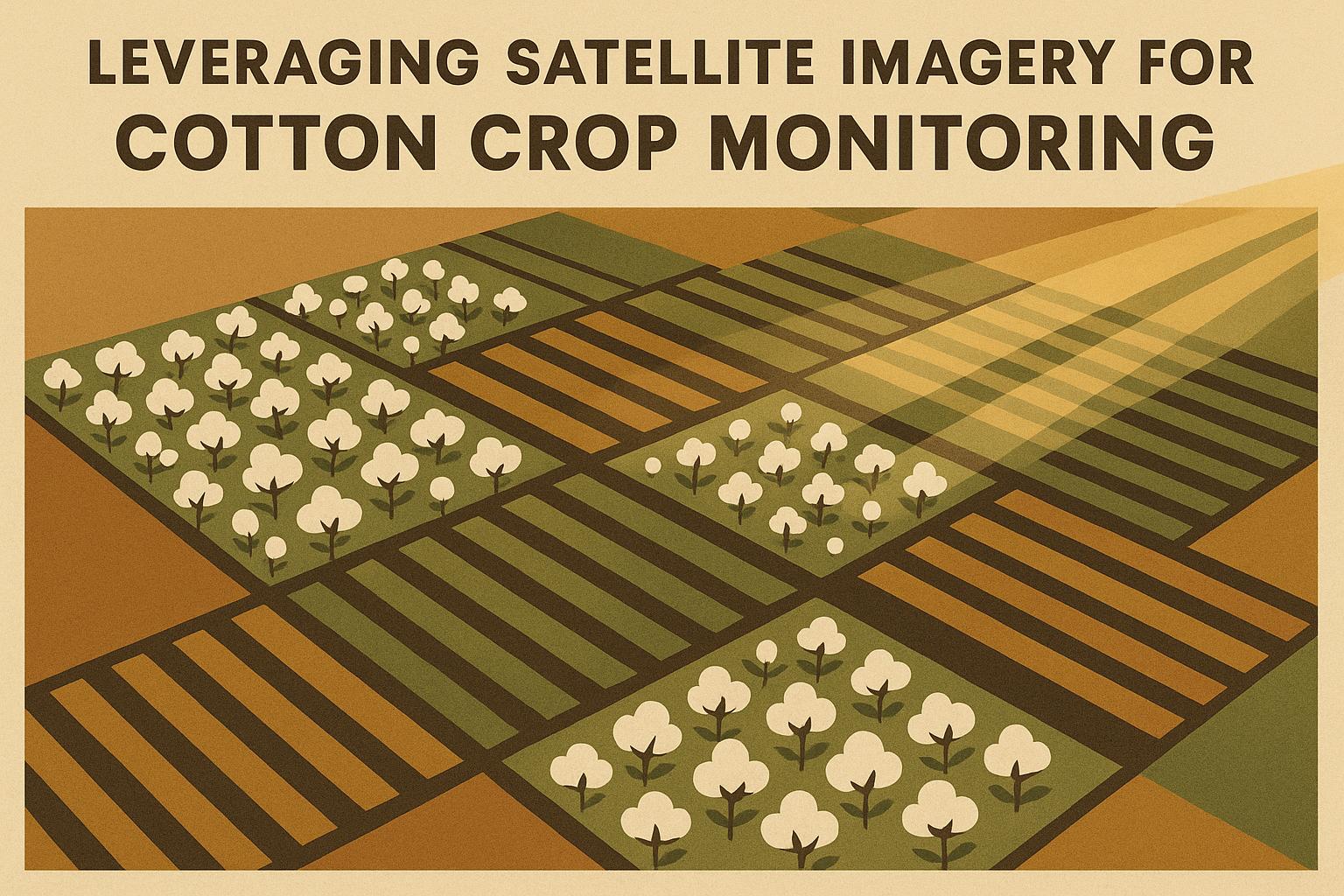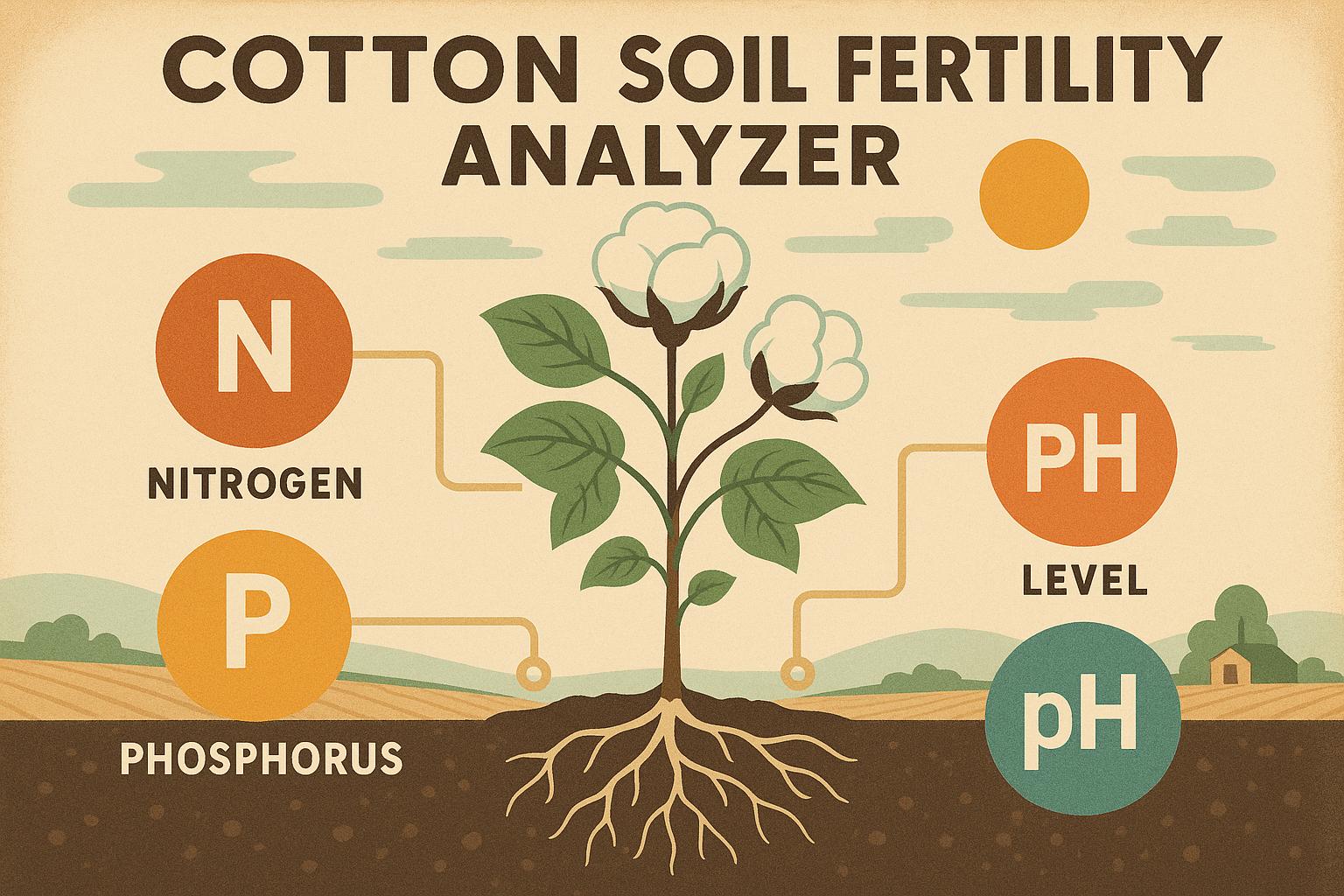Cotton bollworm management is a critical challenge for growers aiming to protect yields in variable field conditions across the Belt. For veteran producers familiar with scouting and thresholds, effective cotton bollworm management strategies can minimize larval damage to squares and bolls, potentially preserving 10-20% of lint production in infested areas. Helicoverpa zea, the primary bollworm species in U.S. cotton, overwinters in soil and emerges to lay eggs on foliage, leading to feeding that reduces boll set and fiber quality. This pest's polyphagous nature—migrating from corn or soybeans—complicates control, but integrated approaches blending monitoring, cultural tactics, and targeted interventions offer a reliable defense. In regions like the humid Southeast or arid Southwest, where bollworm pressure varies with host availability, proactive cotton bollworm management ensures consistent micronaire and staple length for premium markets. This guide explores proven methods, from Bt traits to biopesticides, equipping experienced farmers with tools to optimize thresholds and rotations while addressing resistance. For related insights, check our integrated pest management post on cottongins.org.
Identifying and Understanding Cotton Bollworm Biology
Effective cotton bollworm management begins with recognizing the pest's lifecycle and damage patterns. Adults are mottled brown moths with 1.5-inch wingspans, active at dusk and laying cream-colored eggs singly on leaves or terminals. Eggs hatch in 3-5 days into larvae that progress through five instars, starting pale green and turning pinkish-brown with stripes. Early instars feed on squares, causing flaring and abortion, while later stages bore into bolls, introducing rot fungi that degrade lint.
In high-pressure years, untreated infestations can slash yields by 200-400 pounds per acre, per extension data. Bollworms thrive in 75-95°F temperatures with abundant alternative hosts, peaking mid-season during boll fill. For seasoned growers, key indicators include frass on bracts or larval entry holes with silk webbing. Differentiating from tobacco budworm (Helicoverpa virescens) is vital—bollworms have smoother skins and prefer corn as a trap crop. Understanding regional phenology, like multiple generations in the Delta versus fewer in the High Plains, informs scouting intervals of 3-5 days during susceptible stages.
Resistance to pyrethroids and Bt toxins has surged, with some populations showing 50-100 fold tolerance. Monitoring moth flights via pheromone traps (threshold: 50-100 per week) signals egg-laying waves, allowing preemptive action. Pairing with weather models for degree-day accumulation (base 60°F) predicts hatch timing, enhancing cotton bollworm management precision.
Scouting and Monitoring Techniques for Early Detection
Scouting remains the cornerstone of cotton bollworm management, enabling thresholds that trigger interventions only when economic injury looms. Sample 100 plants per 40 acres, focusing on terminals, squares, and bolls in a zigzag pattern. Thresholds vary: 5-10% damaged squares pre-bloom or 2-5 larvae per 100 bolls post-bloom, adjusted for variety vigor.
Use beat sheets or drop cloths for larval counts, shaking plants over white fabric to dislodge hidden instars. In large operations, drone-mounted multispectral cameras detect stress signatures from feeding, covering 50 acres hourly with 80-90% accuracy. Apps integrating NDVI data flag hotspots, reducing foot-scouting by 30%.
Egg scouting—counting 100 terminals for 5+ eggs—prevents outbreaks, especially in non-Bt fields. Weekly records track population dynamics, revealing migration peaks. For resistance-prone areas, bioassays on collected larvae confirm toxin efficacy, guiding chemistry rotations. Consistent monitoring in cotton bollworm management averts over-spraying, preserving beneficials like lacewings that naturally suppress eggs.
Cultural Practices to Reduce Bollworm Pressure
Cultural tactics disrupt bollworm lifecycles without chemicals, forming the base of sustainable cotton bollworm management. Destroy crop residues post-harvest via tillage or shredding to eliminate pupae, cutting overwintering by 70-90%. In no-till systems, winter covers like rye smother the emergence sites.
Rotate with non-hosts like sorghum or peanuts, breaking cycles and slashing infestations by 40-60%. Avoid late-planted cotton near corn, as moths migrate post-maturity. Early-maturing varieties escape peak generations, reducing exposure during boll set.
Plant density tweaks—80,000-100,000 plants per acre—promote canopy closure, shading soil to deter oviposition. Trap cropping with corn borders lures moths away, with one row per 20 cotton rows diverting 50% of eggs. Irrigation scheduling maintains vigor without excess moisture favoring larvae. These low-cost methods in cotton bollworm management enhance resilience, especially in organic systems.
Biological Control Options for Sustainable Management
Biological agents offer eco-friendly cotton bollworm management, targeting larvae while sparing pollinators. Trichogramma wasps parasitize eggs at 200,000 per acre releases, achieving 60-80% control in timed applications. Bacillus thuringiensis (Bt) sprays, like var. kurstaki, toxinize the guts of young instars, ideal for spot treatments.
Predators like big-eyed bugs and minute pirate bugs naturally reduce populations; conserve them by avoiding broad-spectrum sprays. Nematodes (Steinernema spp.) applied via irrigation infect soil pupae, cutting emergence by 50%. Viral biopesticides, such as HzNPV, induce lethal infections in larvae, with foliar applications at 10^12 PIBs per acre.
In Bt cotton fields, refuges (20% non-Bt) preserve susceptibility, extending trait longevity. Augment with habitat strips of nectar plants to boost parasitoid survival. For high-pressure zones, combine bios with scouting for thresholds. Biological cotton bollworm management cuts chemical reliance by 30-50%, aligning with IPM for long-term efficacy.
Chemical Control: Targeted Insecticide Applications
When thresholds exceed, chemical interventions in cotton bollworm management provide rapid knockdown, but rotate modes to combat resistance. Diamides like chlorantraniliprole (Group 28) disrupt muscle function, with low mammalian toxicity and 14-21 day residuals. Apply at 0.05-0.1 lb ai/acre during egg hatch.
Spinosyns (Group 5), derived from bacteria, target nerves; use spinosad at 0.06-0.09 lb ai/acre for young larvae. Avoid pyrethroids (Group 3) in resistant areas, but lambda-cyhalothrin offers quick action at 0.025 lb ai/acre when susceptible.
Tank-mix adjuvants for coverage, timing sprays at dusk for moth avoidance. Calibrate equipment for 10-20 GPA, using nozzles for canopy penetration. Post-application scouting assesses efficacy; retreat if >5% survival. In cotton bollworm management, limit to 2-3 sprays per season, integrating with bios for stewardship.
Implementing Integrated Pest Management (IPM) Approaches
IPM synthesizes tactics for holistic cotton bollworm management, minimizing risks while maximizing yields. Start with resistant Bt varieties (e.g., Bollgard 3) expressing multiple toxins, covering 95% control but monitoring for breakthroughs.
Layer cultural practices like rotations and traps with weekly scouting to inform decisions. Deploy bios early, reserving chemicals for surges above thresholds. Economic injury levels (EIL) calculate costs: EIL = (control cost / (price per lb yield loss per larva)) scouting efficiency.
Digital tools like apps model populations, predicting peaks for proactive measures. In multi-crop systems, landscape-level IPM coordinates with neighbors to suppress migrations. Annual reviews refine plans, tracking resistance via sentinel plots. IPM in cotton bollworm management sustains 1,200+ lb/acre yields with 20-40% fewer inputs.
Addressing Resistance and Emerging Challenges
Bollworm resistance to Bt and chemistries demands vigilant cotton bollworm management evolution. Rotate traits and modes annually; use non-Bt refuges to dilute resistant genes. Sentinel monitoring detects shifts early, triggering switches.
Climate variability extends generations; adjust models for warmer springs. Invasive strains from South America heighten risks—enhance border scouting. Herbicide-tolerant weeds harbor hosts; integrate cover crops to suppress.
Regulatory changes, like reduced pyrethroid use, push bios adoption. Research on RNAi tech silences pest genes via sprays, promising targeted control. For veterans, hybrid vigor in varieties bolsters tolerance. Adaptive cotton bollworm management counters challenges, safeguarding profitability.
Economic Considerations in Bollworm Control
Cost-benefit analysis guides cotton bollworm management, balancing inputs against yield protection. Scouting ($5-10/acre) averts unnecessary sprays ($20-40 each), with Bt seed premiums ($50/acre) offset by reduced applications.
Threshold-based IPM saves $30-50/acre versus calendar sprays. Resistance prolongs tool efficacy, avoiding $100+/acre losses from failures. High-value markets reward clean lint, adding $0.05-0.10/lb premiums.
Budget tools factor local pressures; in low-infestation years, cultural tactics suffice. For 500-acre operations, effective management boosts net returns by $100-200/acre. Prioritize ROI in cotton bollworm management for sustainable economics.
| Strategy | Application Timing | Benefits | Cost Estimate |
|---|---|---|---|
| Scouting & Monitoring | Weekly, pre-bloom to boll fill | Early detection, reduced sprays | $5-10/acre |
| Cultural Practices | Pre-plant & post-harvest | Lifecycle disruption, soil health | $10-20/acre |
| Biological Controls | Egg hatch stages | Eco-friendly, resistance delay | $15-30/acre |
| Chemical Interventions | Threshold exceedance | Rapid knockdown | $20-40/application |
| IPM Integration | Season-long | Balanced, sustainable control | $50-80/acre total |
These approaches optimize cotton bollworm management efficacy.
Overcoming Regional Variations and Implementation Barriers
Regional differences demand tailored cotton bollworm management. In the humid Mid-South, fungal allies thrive, boosting bios; the arid West favors irrigation tweaks to stress larvae.
Barriers like labor for scouting resolve with drones ($0.50/acre flights). Resistance education via extensions builds compliance. Start small—pilot IPM on 20% acreage—to validate ROI before scaling.
In cotton bollworm management, adaptive strategies ensure resilience across diverse farms.
In summary, robust cotton bollworm management safeguards yields through vigilant integration of tactics. Implement thresholds, rotate tools, and monitor annually for enduring control. Explore our precision agriculture post for tech enhancements. What's your bollworm strategy?


